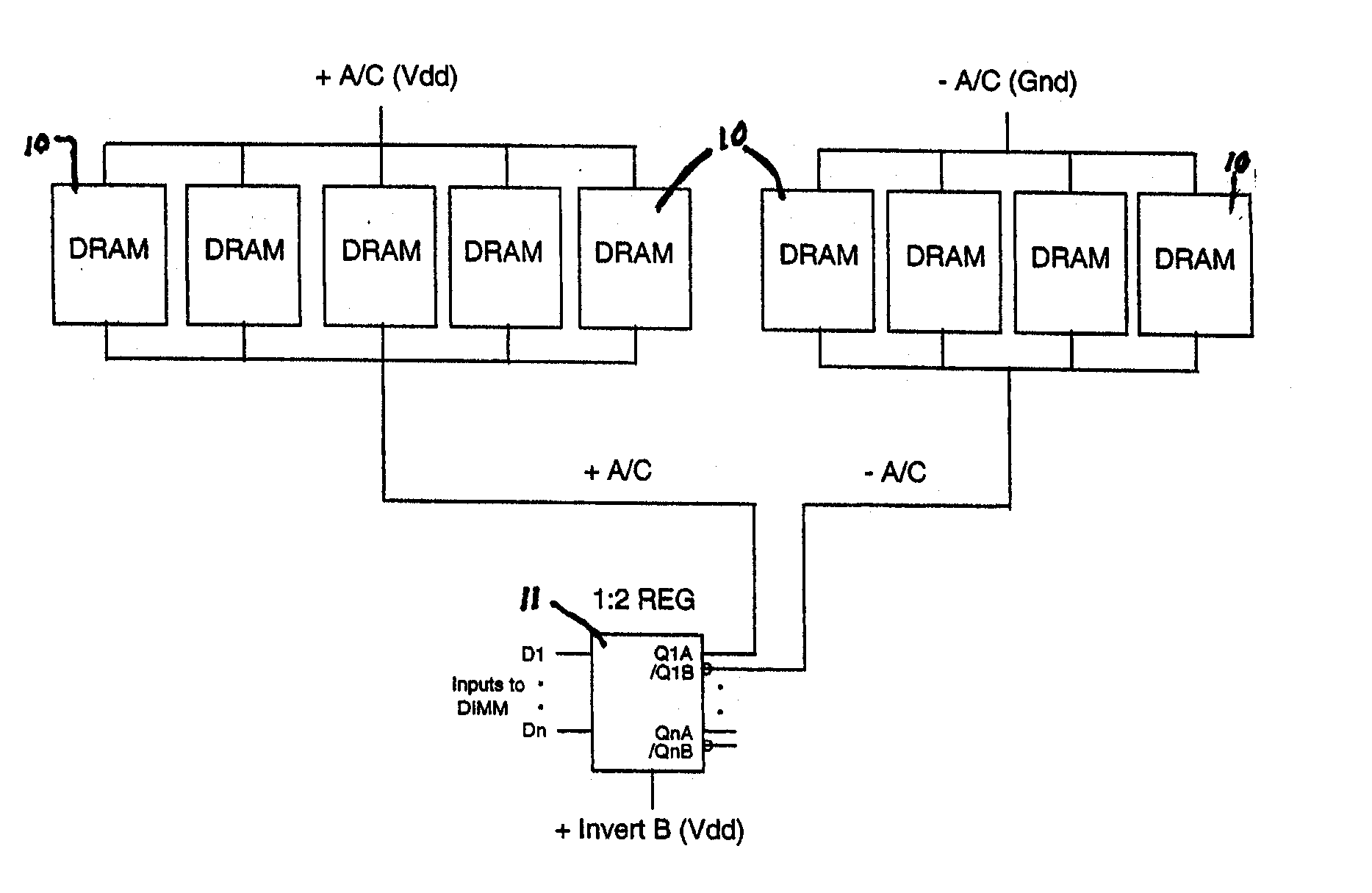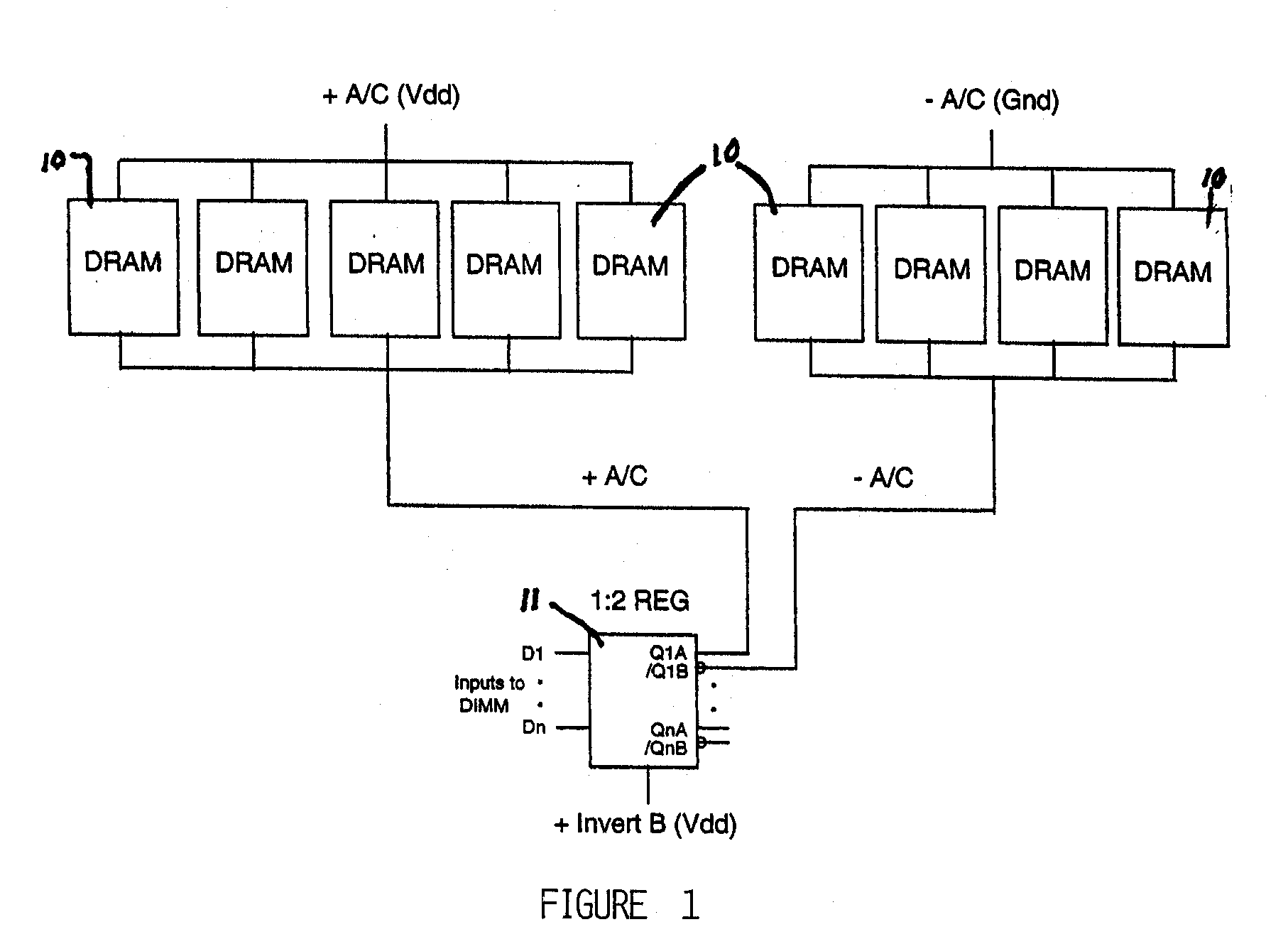Memory device with programmable receivers to improve performance
- Summary
- Abstract
- Description
- Claims
- Application Information
AI Technical Summary
Benefits of technology
Problems solved by technology
Method used
Image
Examples
Embodiment Construction
[0021] A memory module in accordance with the present invention contains multiple synchronous memories which are physically similar and architecturally compatible with a conventional memory module containing multiple asynchronous memories. For purposes of explanation the implementation of the invention utilizes a dual in-line memory module (DIMM) containing multiple synchronous memories. However, the invention is equally applicable to single in-line memory modules (SIMMs), and other arrangements in keeping with the spirit of the invention. Along with the advantage of compatibility, a memory module of synchronous memory in accordance with the present invention preferably employs special placement and wiring of decoupling capacitors about the synchronous memories to reduce simultaneous switching noise during read and write operations.
[0022] Attention is directed to FIG. 1 which illustrates the use of the present invention in a DIMM module using a register and DRAM with inverted addre...
PUM
 Login to View More
Login to View More Abstract
Description
Claims
Application Information
 Login to View More
Login to View More - R&D
- Intellectual Property
- Life Sciences
- Materials
- Tech Scout
- Unparalleled Data Quality
- Higher Quality Content
- 60% Fewer Hallucinations
Browse by: Latest US Patents, China's latest patents, Technical Efficacy Thesaurus, Application Domain, Technology Topic, Popular Technical Reports.
© 2025 PatSnap. All rights reserved.Legal|Privacy policy|Modern Slavery Act Transparency Statement|Sitemap|About US| Contact US: help@patsnap.com


